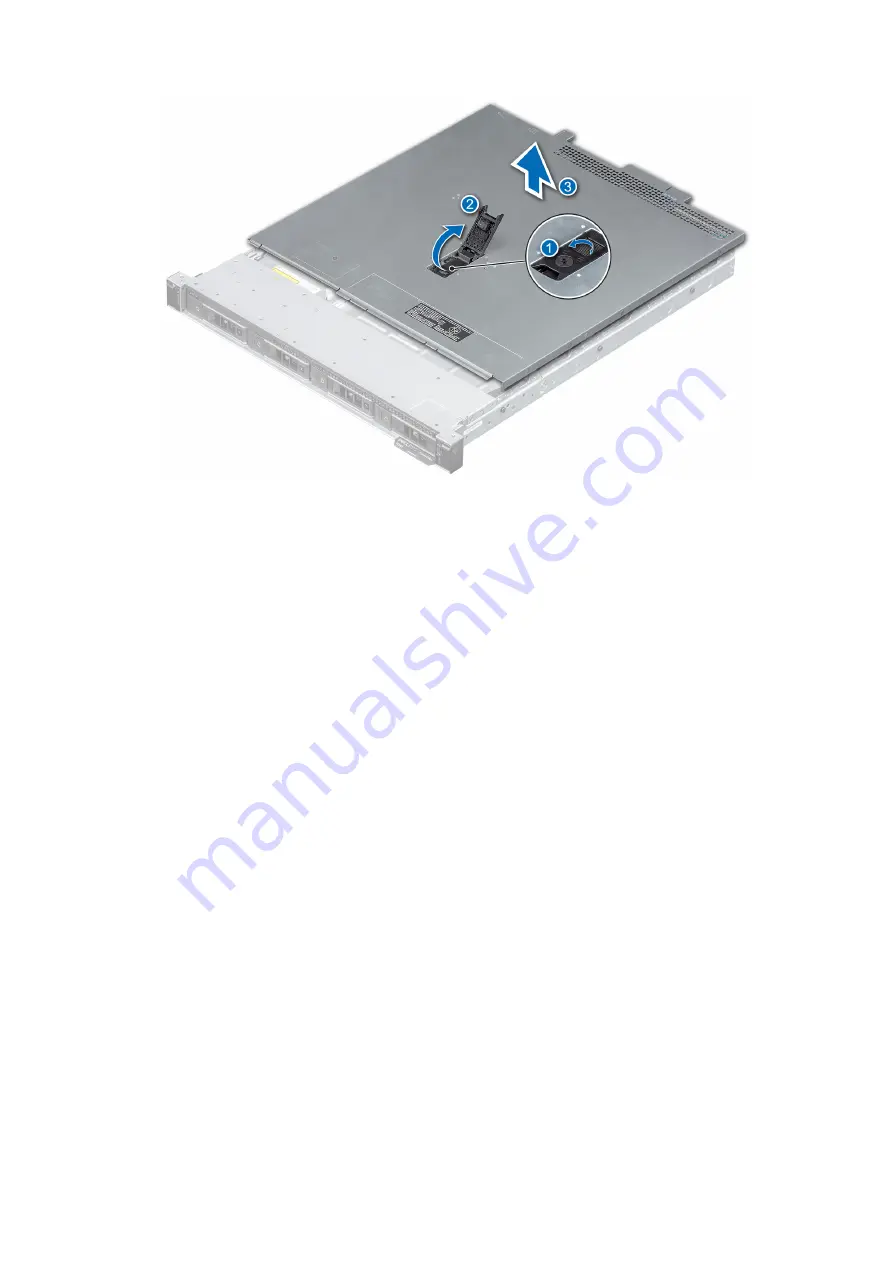
Figure 15. Removing the system cover
Next steps
1.
.
Installing the system cover
Prerequisites
1. Follow the safety guidelines listed in the
2. Follow the procedure listed in the
Before working inside your system
.
3. Ensure that all internal cables are connected and placed out of the way, and no tools or extra parts are left inside the system.
Steps
1. Align the tabs on the system cover with the guide slots on the chassis.
2. Close the system cover release latch.
3. Using a 1/4 inch flat head or Phillips #2 screwdriver, turn the lock clockwise to the lock position.
PowerEdge R340 installing and removing system components
41






























